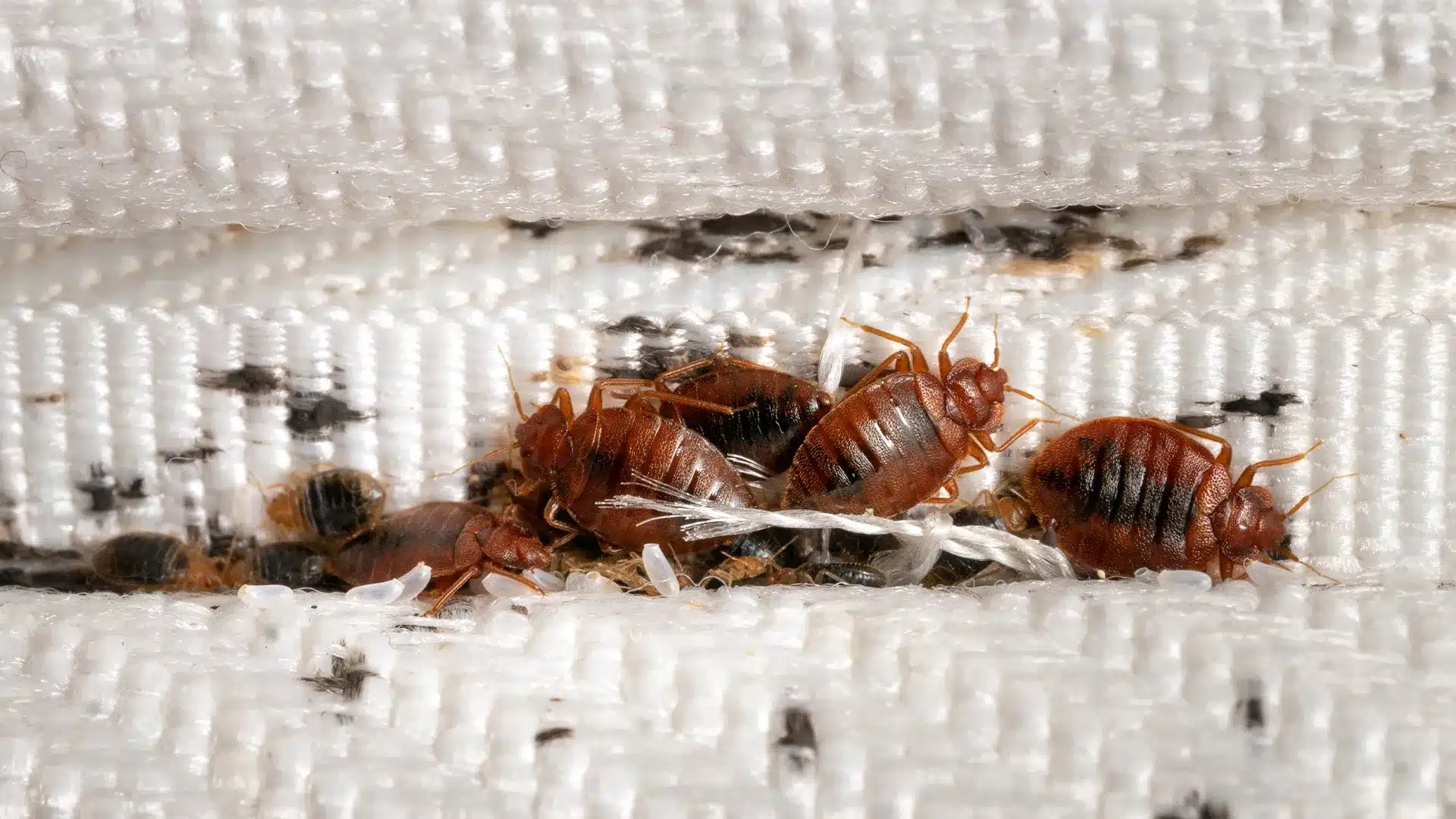Effective Bed Bug Exterminator: DC Providers with Heat Treatment
Effective Bed Bug Exterminator: DC Providers with Heat Treatment
Blog Article
Discovering the Scientific Research Behind Bed Insect Warm Treatments as a Lasting Parasite Management Strategy
One such method that has obtained grip in current years is the use of warmth therapies to battle bed insect invasions. The details of just how warm successfully gets rid of bed insects and the wider ramifications for lasting insect management methods make this a topic worth discovering additionally.
Bed Bug Warm Treatment Refine

Thermal Fatality Point for Bed Pests
Revealing bed bugs to elevated temperatures past their thermal tolerance variety is essential for accomplishing effective elimination in warm treatment processes. The thermal fatality factor for bed insects describes the temperature at which these insects can not make it through. Research study suggests that bed insects begin to die when revealed to temperatures above 113 ° F(45 ° C) for a continual period. As the temperature raises, so does the death price of bed insects. At around 118 ° F(48 ° C ), bed pests begin to die swiftly, with a death price of virtually 99% within mins of direct exposure. This demonstrates the level of sensitivity of bed bugs to high temperature levels and highlights the efficiency of heat therapies in removing problems. By reaching and maintaining temperatures above the thermal death point for bed pests, insect management specialists can make sure detailed removal of bed insect populaces, consisting of hard-to-reach locations where chemical therapies may be much less reliable. Understanding the thermal fatality point for bed pests is essential for applying successful warmth treatment techniques and accomplishing lasting parasite management end results.
Advantages of Heat Treatments
Having developed the crucial thermal fatality point for bed pests, it is crucial to currently check out the considerable advantages that warm therapies offer in properly removing these durable parasites. One of the main advantages is that warmth can permeate deep right into crevices and cracks where bed bugs conceal, guaranteeing that also the most hard-to-reach locations are heated to dangerous temperature levels.
Furthermore, heat therapies are non-toxic and eco-friendly, making them a lasting insect administration technique. Unlike chemical pesticides, heat treatments do not leave unsafe deposits that can pose risks to human health over at this website or the environment. This facet is especially crucial in delicate atmospheres such as health centers, colleges, and domestic locations where chemical use might not be preferable.
Additionally, warmth therapies have a high success price in getting rid of bed pest problems in a single treatment, decreasing the need for multiple check outs and reducing interruption to residents. This effectiveness not just saves time and cash but also provides tranquility of mind to those handling bed insect issues.
Performance of Warm Therapy

Research study studies have actually constantly shown the effectiveness of warmth treatments in achieving a high rate of bed bug mortality. Effectively performed heat treatments can reach all the fractures and holes where bed insects may be harboring, making sure a comprehensive technique to extermination. Heat therapies have the added benefit of killing bed bug eggs, which are usually immune to traditional chemical treatments. On the whole, the efficiency of warmth therapies in eliminating bed pest infestations makes them a sustainable and dependable insect monitoring technique.
Lasting Pest Management Advantages
Implementing sustainable insect monitoring practices supplies lasting advantages for both the environment and public health. By using methods such as warmth treatments for parasite control, we can decrease the dependence on damaging chemical pesticides that can have damaging effects on ecological communities and human wellness - DC exterminator. have a peek here Lasting bug management techniques help in maintaining biodiversity by targeting details parasites without hurting non-target organisms, thus maintaining a balanced ecological community
Moreover, sustainable insect monitoring techniques add to the general health and wellness and well-being of the general public. By reducing exposure to toxic chemicals utilized in traditional insect control methods, heat therapies offer a much safer choice for parasite administration in domestic, commercial, and public areas. This decrease in chemical use likewise assists in preventing pesticide deposits from contaminating water, soil, and air, securing environmental quality.
Verdict
Finally, bed bug heat treatments have been revealed to be a sustainable and efficient pest administration strategy. The thermal fatality factor for bed bugs makes them at risk to warmth treatments, which have many advantages over standard chemical treatments. The effectiveness of warm therapies in getting rid of bed pest problems while decreasing environmental influence highlights the capacity of this approach as click for info a lasting option for pest control.
The bed pest warm therapy procedure entails raising the temperature within ravaged areas to a level that efficiently eliminates bed pests and their eggs. By reaching and maintaining temperature levels above the thermal fatality factor for bed bugs, insect administration experts can make certain comprehensive removal of bed insect populaces, including hard-to-reach locations where chemical therapies may be less efficient. One of the key advantages is that warm can penetrate deep into cracks and holes where bed pests hide, making sure that also the most hard-to-reach areas are warmed to lethal temperatures. Unlike chemical therapies that might leave behind immune populations, warmth treatments use a eco pleasant and non-toxic option that can pass through deep right into furnishings, walls, and various other hard-to-reach locations where bed bugs conceal.
The thermal fatality factor for bed bugs makes them susceptible to warm treatments, which have countless benefits over conventional chemical treatments.
Report this page